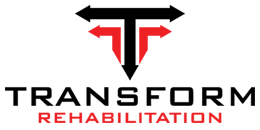Pregnancy-Related Low Back Pain
What are the Causes of Pelvic Girdle and Low Back Pain During Pregnancy?
Due to hormonal changes during pregnancy, abdominal and pelvic muscles are stretched, and lower back muscles may shorten. This phenomenon can cause muscle imbalances, which can lead to pain. Also, pelvic joint laxity may occur increasing forces on the lower back and hip joints, also causing pain and making it difficult to perform everyday tasks.
What is the Prevalence of Low Back Pain and Pelvic Girdle Pain During Pregnancy?
Studies show 72% of women experience low back and pelvic girdle pain during pregnancy. 83% of those women have decreased pain symptoms following physical therapy intervention. (Albert 2002)
What are the Risk Factors for Developing Low Back Pain During Pregnancy?
- Multiple Pregnancies
- History of Low Back Pain
- High Work Load
What are the Symptoms of Low Back and Pelvic Girdle Pain During Pregnancy?
Pain may be on one or both sides. Women can experience this pain with sitting, standing, walking, bending, lifting and while sleeping.
How We Treat Low Back Pain During Pregnancy
After a thorough evaluation of the cause of your low back or pelvic pain, skilled physical therapy intervention may include:
- Muscle Energy Techniques
- Massage
- Core Stability and Strength Training
- Postural and Pelvic Floor Re-education
- SI Belt Fitting
- Home Exercise Program and SI Self-Correction Exercises
*Services are not available at all locations. Call or click the location page near you for that center’s services.
What to Expect
Every patient has a unique health history, diagnosis and personal goals. When you come for your first appointment, we will create a personalized treatment plan for you.
We work with most major insurance providers and do our best to help keep the paperwork pain-free. If you’d like to confirm your insurance coverage, please let us know and we can verify when you schedule. If your insurance provider requires a co-pay, we will ask for this payment at each visit. We accept payments by cash, check or credit card.
When to Arrive
On average, a patient’s first visit lasts about an hour. We typically ask patients to arrive 15 minutes early to sign-in, complete paperwork and/or change clothes.
What to Bring
On your first visit, you’ll need to bring your physician referral or prescription (if needed), your insurance card, your primary registration forms, your ID or driver’s license and your co-payment (as applicable). If desired, you may bring a change of clothing.
How it Works
During your first visit, your physical therapist will do an initial evaluation and discuss your plan of care. The therapist uses this information to set goals for your continued treatment. Physical therapy goals may include improved movement, strength, endurance and flexibility, as well as decreased pain. Your subsequent visits will focus on treatment that is based on your diagnosis and individualized goals.
